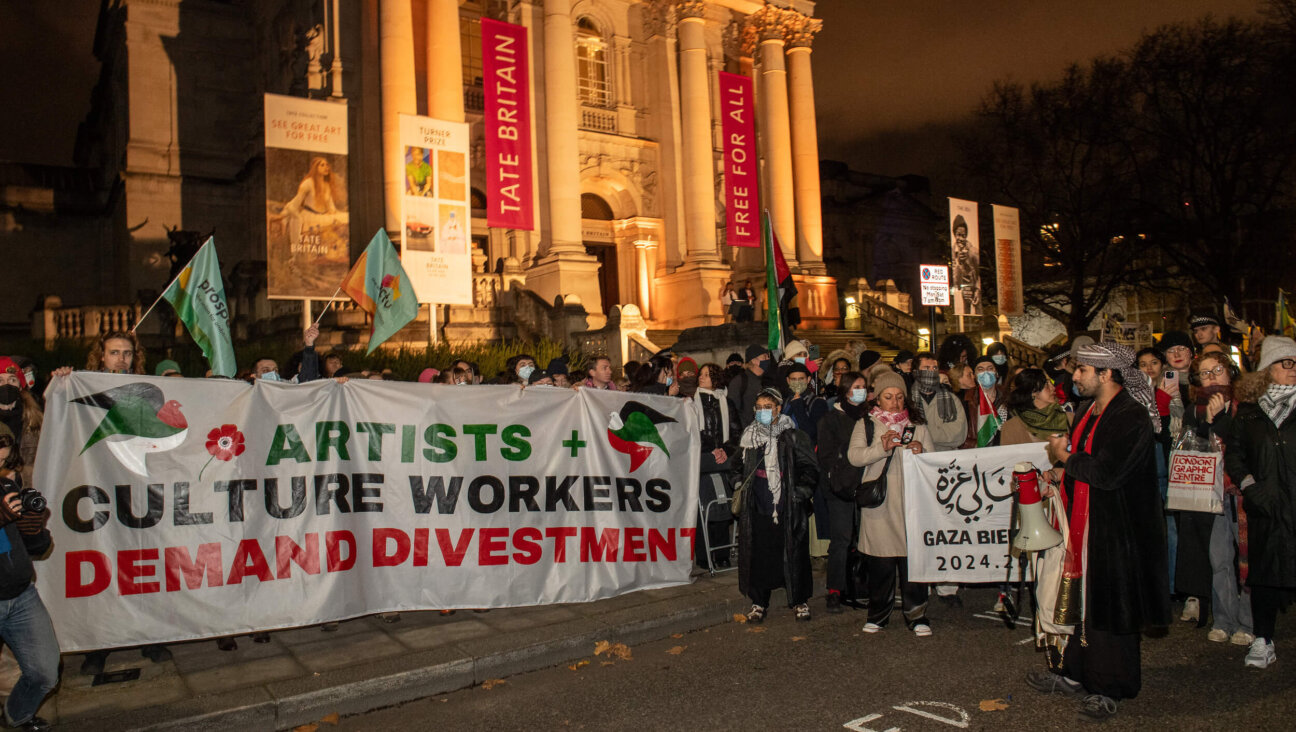The Bialy Stages a Major Comeback

Graphic by Angelie Zaslavsky
Sign up for Forwarding the News, our essential morning briefing with trusted, nonpartisan news and analysis, curated by senior writer Benyamin Cohen.
Growing up in the Midwest in the 1980s and 1990s, I never knew from a bialy. Bagels we had aplenty — though mostly oversized and of the blasphemously flavored variety (think blueberry and, my childhood favorite, chocolate chip). But shortly after moving to New York in my early 20s, I met the beautiful bialy — a delightful cross between a bagel and an onion roll — flat and chewy, with a well of caramelized onion and poppy seeds pressed into its center.
READ MORE: FORWARD 50 – LEAH KOENIG
In her book, “1000 Foods to Eat Before You Die,” Mimi Sheraton writes, “To true aficionados of Jewish breads, the toasty yeast roll with a crisp crust and a crackling center is where it’s at.” (Sheraton is author the author of “The Bialy Eaters: The Story of a Bread and a Lost World” — so clearly a fan.) The bialy, she goes on, was first made by Jewish bakers in Bialystok, Poland, and called Bialystoker kuchen. In “The Encyclopedia of Jewish Food,” Gil Marks adds, “By the end of the [19th] century , nearly every street in the Jewish sections of Bialystock contained a small kuchen bakery.”
Jewish immigrants brought their beloved bread to New York City sometime in the early 1900s, where the baked good’s name was shortened to bialy. Spread with butter or cream cheese, it was the perfect, handheld breakfast or snack. And for decades, they thrived on the streets of New York.
By the time I first tasted them in the early 2000s, bialys seemed to be dying out — a relic of Jewish bakeries past. Unlike the bagel, which had become part of mainstream American food culture, they were all but forgotten.
You could still find them here and there, like at Kossar’s on the Lower East Side. But when Brooklyn’s oldest bialy store, Coney Island Bialys and Bagels closed in 2011, it appeared that their days were all but over. I reveled in their delightfully charred exterior, their pizza crust chew and the treasure chest of sultry onions. I clung to them, thinking every bialy I tasted might be my last.
It looks like I needn’t have worried. Because today, the bialy is enjoying a solid comeback in New York City. Kossar’s, which opened in 1936, recently closed in order to expand and renovate — it will be back and in full force before the end of the year.
Meanwhile, thanks to the popular bread company/social enterprise, Hot Bread Kitchen, which started selling hand-crafted bialys at an artisanal food market in Manhattan in the mid-2000s, they quickly re-entered New York City’s food scene. Mile End, the nouveau Brooklyn delicatessen, started using them as a base for their cured fish sandwiches. The Brooklyn-based appetizing shop Shelsky’s also offers bialys. A recipe for its now-famous bialys is included in Hot Bread Kitchen’s recently published cookbook.
I’m happy to know that the bialy’s future in New York City looks stable and strong. But I will continue to be grateful for each one. After all, I’m well aware of what we could have lost.
Leah Koenig is a contributing editor at the Forward and author of “Modern Jewish Cooking: Recipes & Customs for Today’s Kitchen,” Chronicle Books (2015).
















